 |
|
|
|
|
|
|
|
To book any of the below programs contact:
|
|
|
|
|
|
Ghost Stories and Folk Tales from the Emerald Isle
|
|
|
|
Ireland is often associated with creamy pints of Guinness, quaint pubs, traditional music, dancing, and pastoral, postcard-worthy scenery. However, what's often overlooked is its relationship with the supernatural world. The island is steeped in history and mythology, and where there's history you will find many local legends and stories of ghost sightings.
Centuries after Christianity came to the island many Irish still gathered to celebrate the ancient Celtic tradition of 'Samhain' marking the end of harvest and the start of Winter…the 'dark half of the year.' The Irish believed that barriers to the spirit world broke down during this time–-allowing interaction between humans and spirits from the underworld. Many folks believe that the history of Halloween begins in Ireland.
Author, speaker, storyteller, and retired history teacher Eddie Price brings some of Ireland's most chilling legends and ghost stories to life in this 40-45-minute presentation. The audience will learn about the five ghosts that haunt Malahide Castle, the Black Cat of Killakee (Ireland's most haunted cat), the tale of Jamie Freel and the fairies, the history of Halloween, and the origin of the Jack-o-Lantern.
|
|
|
|
|
|
|
|
|
|
|
Lincoln's Brown Water Navy
|
|
|
|
Did you know that ironclad warships fought on America's western rivers months before the Monitor and Merrimack (CSS Virginia) clashed at Hampton Roads?
In "Lincoln's Brown Water Navy," Eddie Price embarks on a "not-so-often-told" journey down the Ohio and Mississippi Rivers, up the Cumberland, Tennessee, White, Arkansas, and Yazoo Rivers... and much more. Learn about the "Anaconda Plan", Forts Henry and Donelson, Fort Columbus (the "Gibraltar of the West" with its big iron chain), Island No. 10, Plum Point, the "melee" at Memphis (a big naval battle fought before the eyes of Memphis citizens), David Farragut's daring run past the batteries on his way to New Orleans, the long and bloody sieges at Vicksburg, Mississippi and Port Hudson, Louisiana, and the disastrous Red River campaign--where the Union fleet was saved by a giant winged dam.
Price shows photos of the new shallow draft "City Class" ironclads built at the Union Shipyards at Carondelet, Missouri and Mound City, Illinois—also mortar boats, "tinclads," (thin iron plating, not tin) "timberclads," and even "cottonclads" (used by Confederate warships.) Ulysses S Grant depended on the gunboat flotillas to coordinate amphibious assaults, guard troopships and supplies, bombard fortifications and attack Confederate ships. These gunboats could dish out the punishment as well as absorb it! And they played a major role in winning the western theater of the US Civil War.
|
|
|
|
|
|
|
|
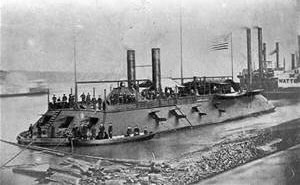 |
|
|
|
The USS Cairo on the Mississippi circa 1862
|
|
|
|
|
|
|
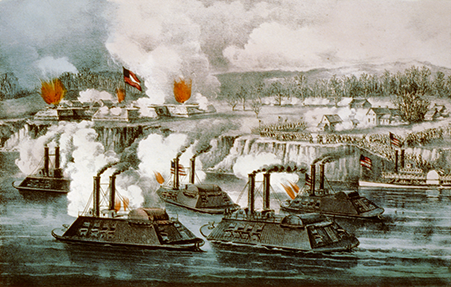 |
|
|
Union Gunboats
|
|
|
|
|
|
|
|
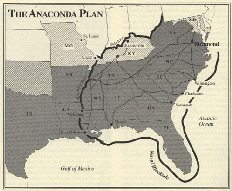 |
|
|
The Anaconda Plan
|
|
|
|
|
|
Maps, portraits, photographs and text are presented in a colorful and educational PowerPoint slideshow suitable for the classroom (grades 4-12), colleges and universities, historical societies, Civil War reenactments, libraries, civic and patriotic groups, etc.
|
|
|
|
What I Saw at Cane Ridge - The Great Revival that Transformed Kentucky.
|
|
|
|
|
|
|
Cane Ridge, Kentucky
August 1801
|
|
|
|
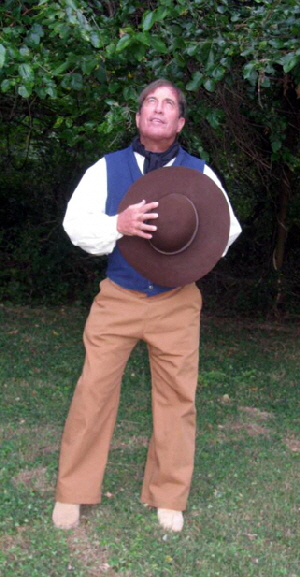 |
|
|
|
When people talk about the “Bible Belt” they might be interested to learn of its roots in the great Cane Ridge Revival. What happened in those fire-lit groves and cane-covered hills?
*Take a journey back to 1801. Find out what drew 25,000 people (including Kentucky’s governor) to Cane Ridge. *Sing one of the old hymns that some folks claimed to “Make the flesh tremble.”
|
|
|
|
|
|
|
Eddie Price, author of the award-winning Kentucky historical novel Widder’s Landing, has presented educational programs all across Kentucky and beyond. His latest program is entitled “What I Saw at Cane Ridge.”
Throughout most of the 1800’s, and even into the 1900’s, Americans west of the Appalachians (especially Kentuckians) prefaced their outdoor brush arbor sermons and tent revivals with the prayer, “Lord, Make it Like You Did at Cane Ridge!” Obviously, the Cane Ridge Revival made a tremendous impact upon the people who experienced it, bringing religion to those living in a “Hog and Hominy” existence.
Through dramatic interpretation, Price “recounts” what he and others “saw” at Cane Ridge on that fateful week in August 1801. Some people referred to the event as the Second Pentecost; others sought to discredit it entirely. But no one can deny that it changed lives and shaped Kentucky’s (and the Deep South’s) social and cultural development. When politicians and sociologists use the term “Bible Belt” they can trace the origin back to Cane Ridge! Kentucky was transformed from a lawless frontier population to a church-going state.
|
|
|
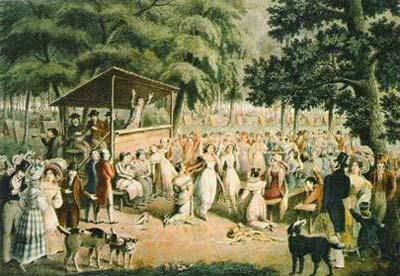 |
|
|
|
|
|
 |
|
|
|
|
|
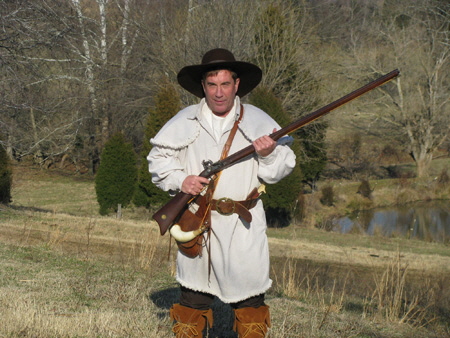 |
|
|
|
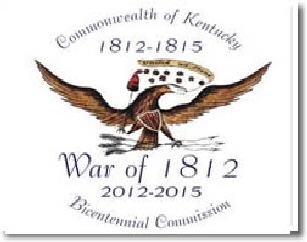 |
|
|
|
|
|
1812: Remember the Raisin!
"Frenchtown, Ft. Meigs, Mississinewa, the Battle of Lake Erie, the River Thames, New Orleans..." Kentucky's contribution in the War of 1812 was vital to the American War effort. This presentation shows how deeply Kentuckians were involved economically, politically, militarily, and emotionally. The massacre at River Raisin gave rise to the battle cry of the war: "Remember the Raisin!" Governor Isaac Shelby left Frankfort to lead troops along the northern frontier and commanded victorious soldiers at the Battle of the Thames. After all they had sacrificed, Kentuckians answered the call once more to defend New Orleans. The epic battle on the sugarcane plantations below the city provided redemption for the young American nation ─- and for a state seeking to shed its pioneer image to become one of the more influential states in the union.
|
|
|
|
 |
|
|
|
|
|
Kentucky Rising
|
|
|
|
Kentucky Rising: 1815-1820. This program takes a look at Kentucky in the five years after the War of 1812. With Henry Clay as Speaker of the House and an increasing presence on the national stage, Kentucky develops into one of the more influential states in the union. Clay presses for an “American System” with a National Bank, protective tariff, and a network of federally funded highways and canals. He also brings the first Hereford cattle to his Ashland estate. Steamboat travel increases on the Ohio and Mississippi Rivers. Hemp will mean new opportunities for some Kentuckians as the cotton trade and world markets expand.
|
|
|
|
|
|
America becomes embroiled in a trade war with Great Britain. Mother Nature brings “The Year Without a Summer” and Kentucky struggles to rise above the panic of 1819. Slavery continues to raise its ugly head as Henry Clay engineers the first of many compromises to keep America from Civil War. Learn about Kentucky in “those forgotten years” that most history books bypass.
|
|
|
|
|
|
Maryland, Kentucky & Beyond
|
|
|
Catholics — from the Old World to Maryland
|
|
|
|
|
|
|
This program depicts, through a colorful and educational PowerPoint slideshow, the forces that ignited the great Catholic movement from England and Ireland to colonial Maryland. Catholics suffered under the tyranny of British monarchs and saw their churches pulled down, education forbidden, and way of life destroyed.
The colony of Maryland offered hope for thousands of Catholics seeking freedom of worship. The Atlantic journey was fraught with danger — enemy warships and hurricanes: hardship and hunger. Indentured servitude co-existed alongside slavery and work on the plantations was hard. Despite changing politics in the old country that would be transplanted to the colonies, several Catholics grew rich and managed to build and worship in private chapels. The Jesuits maintained a large plantation called White Marsh and educated Catholic youth. Some planters grew extremely wealthy and played major roles in framing Maryland's new government. Charles Carroll of Carrollton was one of four Marylanders to sign the Declaration of Independence; he was the only Catholic to do so, and he was the last survivor of the fifty-six signatories, dying in 1832 at the age of ninety-six.
|
|
|
|
|
|
|
|
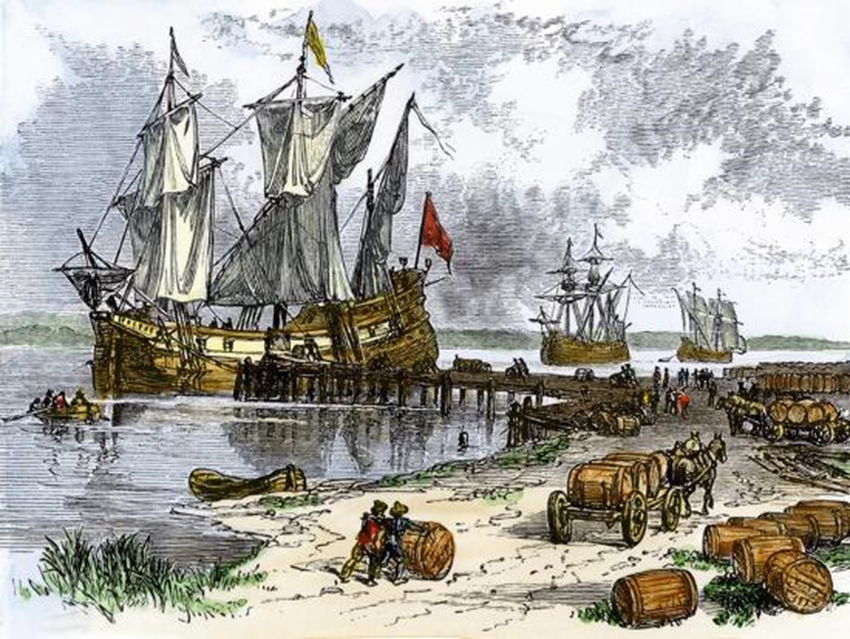 |
|
|
Colonial Ships in the New World
|
|
|
|
|
|
|
Catholic Pioneers in Kentucky
|
|
|
|
This program was first presented at Springfield College for the 2014 “Maryland, Kentucky & Beyond” Reunion, a gathering that brought families from all over the present-day United States to Kentucky’s “Holy Land” (Bardstown, Nelson County; Springfield, Washington County; and Lebanon, Marion County.) In this program retired history teacher Eddie Price examines the “push” factors that brought Catholics to the New World, specifically to the colony of Maryland. He then looks at the “pull factors” that enticed Maryland Catholics (as well as other denominations) across the Appalachians and into Kentucky.
|
|
|
|
|
|
Follow the original 60 families from Maryland to Limestone, Kentucky, then overland to the heart of the Bluegrass. Meet Father Stephen Theodore Badin, Father Charles Nerinckx and Benedict Joseph Flaget, the “First Bishop of the West.” Learn of their individual struggles in a wilderness where pioneers sought to shed Kentucky’s frontier image and to establish churches where they could worship regularly. Through a powerpoint slideshow and stories gleaned from personal journals, private letters, and document extracts, you will gain a new appreciation for these early settlers.
|
|
|
|
Writing, Publishing, & Marketing
In this inspirational program Eddie Price talks about his road to publishing the award-winning Widder’s Landing, now in a 4th printing at Acclaim Press. He can tailor the program to fit needs of classroom teachers, aspiring writers groups, self-published authors, and more.
He talks about:
|
|
|
|
|
|
- 1. The publishing industry today (the hard facts)
- 2. Writing with a purpose; creating the story idea, maintaining a theme, developing plot, characters, story arcs.
- 3. His personal approach to writing historical fiction, but applies writing to other genres—and the importance of keeping the audience in mind.
- 4. Developing the "Query Letter": approaching literary agents and publishers
- 5. Developing a Marketing Plan (a must!) Defining a target audience.
- 6. Networking--and the exponentially changing marketing plan
- 7. The burgeoning business of self-publishing
- 8. Questions & Answers
Eddie will work with the teacher or host to design a program suited for the group’s needs. Contact him for more details. This program has been presented in high schools, colleges and universities, and for writers groups (including the “Business of Writing International Summit” www.businessofwritingsummit.com ) and the Readers Favorite Awards www.readersfavorite.com
A practical program for aspiring--and published--writers.
|
|
|
|
 |
|
|
|
|
|
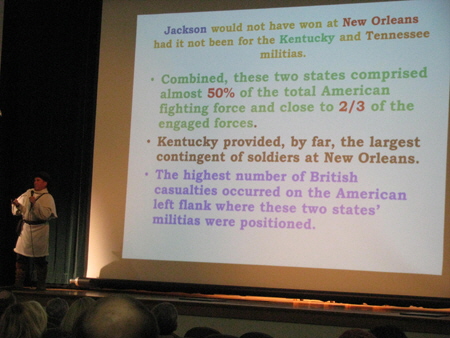 |
|
|
|
Kentuckians and Tennesseans at the Battle of New Orleans
In 1814 a huge British armada of sixty warships and 14,000 men descended upon the western American city of New Orleans as part of an overall strategy to end the war with America--and perhaps to seize the Louisiana Purchase. The fledgling US Government sent Major General Andrew Jackson of Tennessee with a force of 990 "bluecoats" to defend the city. Short of weapons, gunpowder, and manpower, "Old Hickory" was forced to use the resources available to him. He cobbled together a force of wealthy planters, Creole militias, slaves, free blacks, Choctaw Indians and pirates--but he was still desperately short of men. Historians agree that without the Tennessee and Kentucky militias, the battle could have had a much different outcome.
Eddie Price presents a 40-45 minute educational program dressed in authentic costume, complete with colorful powerpoint slideshow, interesting stories and period music (which includes audience involvement. Developed for the 2015 Nunez College Symposium in conjunction with a book the college published ("The Battle of New Orleans Reconsidered") this program provides valuable insights into the war contributions of these two frontier states.
|
|
|
|
 |
|
|
|
|
|
The Battle of Blue Licks
This program was first presented at the 2015 National Sons of the American Revolution Congress in Louisville, Kentucky and is now listed in the Kentucky Humanities Council Speakers Bureau catalog. Eddie Price walked and photographed the state park grounds, spoke with historians and park rangers, and researched meticulously to create this educational program on Kentucky’s (then western Virginia’s) war efforts. Great for patriotic groups, historical and genealogical societies, and classes wanting to learn more about “Kentucky” in the Revolutionary War!
|
|
|
|
|
By 1782 the American Revolution was drawing to a close. Lord Cornwallis had surrendered at Yorktown and negotiators were hammering out the Peace of Paris. But the war still raged for frontier settlers, American Indians, and Canadian rangers. On August 19, 1782, Kentuckians would suffer one of the worst military defeats of the war. Learn about the events leading up to the battle that some historians call “The Last Battle of the American Revolution.” Complete with colorful PowerPoint slides depicting the western theater of the War, George Rogers Clark’s exploits, frontier massacres, maps and photographs of the battlefield, and a travelogue of one of Kentucky’s oldest state parks, this program is a “must see” for Kentuckians.
|
|
|
|
 |
|
|
|
The mighty Ohio River has played a crucial role in America’s economic and political development. From prehistoric dugout canoes to modern diesel-powered towboats, Eddie Price discusses the various crafts that appeared on the river and how they helped shape America’s destiny. Pirogues, flatboats, and keelboats would transport the new settlers and their goods—later replaced by the steamboat. Journey with Price on the first steamboat New Orleans as it embarked on its maiden voyage over the “Falls of the Ohio” and through the earthquake-ravaged Mississippi in 1811. See colorful slides of new, shallow-draft steamboats as they appeared on the river, the armored gunboats of Ulysses S. Grant’s “Brown-water Navy” during the Civil War, packet boats and showboats of the post-war era, and the new boats of today.
|
|
|
|
Price discusses the many ways that Americans have used the river throughout history, and he provides insight on the Army Corps of Engineers’ continuing efforts to provide safe, navigable channels and to control major flooding. New “Riverport Authorities” have acquired international status, linking highways, rails, and airports to the river. Complete with maps, charts, portraits and pictures, this slideshow is sure to educate. Price even brings a model “New Orleans boat” for display—a floating warehouse complete with sweeps, livestock, whiskey barrels, “hemp rope”, and more. Great for classrooms of all levels, historical societies, museums and book clubs.
|
|
|
|
|
|
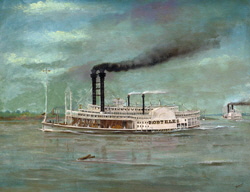 |
|
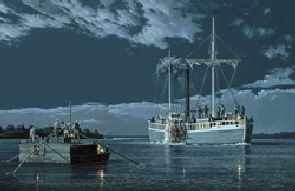 |
|
|
|
|
|
|
 |
|
|
|
Did you know that Illinois’ first governor was a Kentuckian? Ninian Edwards was a territorial governor then, but he was later a United States Senator and would become Illinois’ third governor. Many of Illinois’ most prominent historical figures were first Kentuckians — preachers, lawyers, judges, senators, attorneys general, military commanders, railroad magnates and more. From the earliest times Kentucky and Illinois have shared two of America’s greatest geographical resources, the Ohio and Mississippi Rivers. Each state remained in the Union during the Civil War; each state had its share of abolitionists and pro-slavery populations. The two states share claim to one of America’s greatest presidents, Abraham Lincoln. In the words of Charles Dickens the states have endured the “best of times and the worst of times.”
Author Eddie Price has added another historical program to his growing list of presentations. Price covers early European exploration, the French & Indian War, the American Revolution, the War of 1812, religion, the slavery issue, politics and economics, the Civil War and the Age of Industry in an educational and entertaining slideshow that presents a kaleidoscopic panorama of shared experiences and historical personalities. A Tale of Two States examines the close relationship between Kentucky and Illinois and the influence that each state has had upon the other. Ideal for the Illinois classroom, colleges and universities, historical and genealogical societies and patriotic organizations. This program was first presented in 2015 to the Illinois Heritage Alliance in Peoria.
|
|
|
|
|
|
 |
|
|
|
Homemaking on the Kentucky Frontier
|
|
|
|
|
|
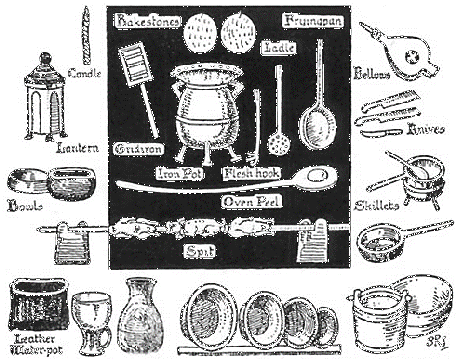 |
|
|
Homemaking on the Kentucky Frontier
|
|
|
|
Take a journey back to 1811 and experience homemaking on the Kentucky frontier—“from the ground up.” After clearing timberland, fencing off pastures, and planting crops, homemakers involved themselves in every aspect of building a home from available materials. Roofing, flooring, insulation, heating, water supply, and lighting were considerations then as now. Learn how frontier folk cultivated and preserved their food, made their clothes, doctored their families, and still found time for recreation and religion.
|
|
|
|
|
|
|
Cooking on open hearths, hemp and flax breaking, heckling, spinning, weaving and dyeing are examined. The audience will appreciate the severity of disease and how little medical knowledge existed in the early 1800’s. Native American and folk remedies are discussed, along with frontier religion and recreational activities.
Eddie Price displays utensils used by early Kentuckians and educates with a colorful PowerPoint slideshow. Great for classrooms K-12, college classes, and historical, genealogical, and homemaker societies. This program was first presented for the Kentucky State Homemakers Association Convention in 2017.
|
|
|
|
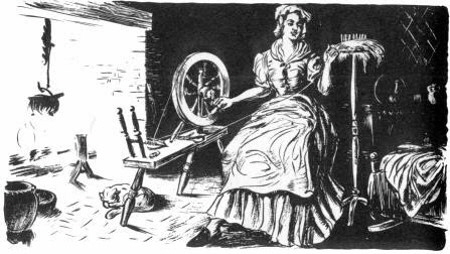 |
|
|
|
 |
|
|
|
|
|
|
How a Children’s Book Happens!
|
|
|
This program is educational—and extremely entertaining. Children’s book author Eddie Price takes you on a literary journey, showing how the writer begins with an idea, a character, a story, and an overall theme.
He discusses writing with a purpose and having a target audience in mind. His written instructions to illustrator Mark Wayne Adams are shown with the preliminary black-and-white placement sketches, followed up by the professional comments of editor Jennifer Thomas.
Color pictures follow, along with graphic design, printer’s contracts and proofs, shipping and marketing. The whole book literally evolves before the audience’s eyes, giving insight into just how complex a children’s book is.
|
|
|
|
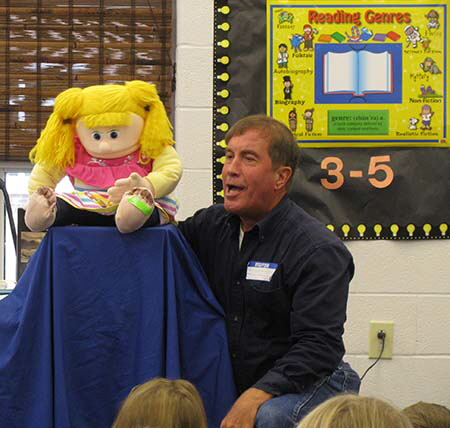 |
|
|
|
|
|
|
|
|
|
|
|
|
|
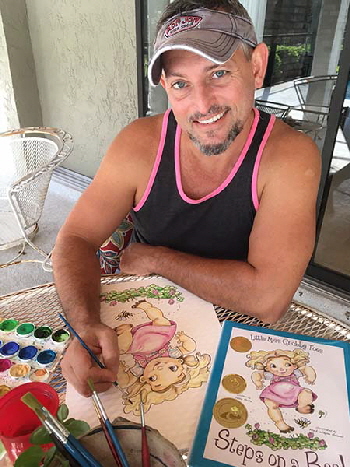 |
|
|
|
Illustrator Mark Wayne Adams
|
|
|
|
 |
|
|
Editor Jennifer Thomas
|
|
|
|
(Left) Eddie Price presenting a program to children.
|
|
|
|
|
|
|
|
Christmas in The American Colonies
|
|
|
|
|
Christmas in Colonial America did not resemble the brightly lit festivities we have today. There were no Christmas trees, greeting cards, slick advertisements or piles of expensive gifts. European immigrants brought their religious and ethnic beliefs with them, and attitudes toward Christmas varied accordingly.
“Ebenezer Scrooge” and “The Grinch” would have felt right at home in the New England Colonies, where a display of holiday spirit could incur a five-shilling fine. Puritan officials forbade such activities church services, taking off from work, and Christmas feasting.
In the Middle Colonies, Quakers treated Christmas as any other day of the year. Presbyterians did not hold formal services until they noticed that their members were heading to the Anglican church to observe Christmas. But Dutch and German settlers brought many lively traditions to the Middle Colonies—baking, “Christmas pyramids” and Saint Nicholas. They, the Anglicans and Roman Catholics planted the seeds of Christmas in Colonial America.
Christmas in the Southern Colonies included feasts, dancing, hunting, visiting, and church services. Decorations of winter greenery—holly, laurel, ivy, rosemary and mistletoe—added beauty to the occasion. This program opens a window into how Christmas was celebrated at George Washington's home at Mount Vernon, complete with diary entries and even the President's gift list!
Great for any time of the year, for schools, colleges and universities; historical societies and patriotic organizations—especially for your organization's Christmas party!
|
|
|
|
|
|
 |
|
|
|
The American Revolution in the West
|
|
|
|
This program was first presented at the 2015 National Sons of the American Revolution Congress in Louisville, Kentucky and is now listed in the Kentucky Humanities Council Speakers Bureau catalog. Eddie Price walked and photographed the state park grounds, spoke with historians and park rangers, and researched meticulously to create this educational program on Kentucky’s (then western Virginia’s) war efforts. Great for patriotic groups, historical and genealogical societies, and classes wanting to learn more about “Kentucky” in the Revolutionary War!
|
|
|
|
By 1782 the American Revolution was drawing to a close. Lord Cornwallis had surrendered at Yorktown and negotiators were hammering out the Peace of Paris. But the war still raged for frontier settlers, American Indians, and Canadian rangers. On August 19, 1782, Kentuckians would suffer one of the worst military defeats of the war. Learn about the events leading up to the battle that some historians call “The Last Battle of the American Revolution.” Complete with colorful PowerPoint slides depicting the western theater of the War, George Rogers Clark’s exploits, frontier massacres, maps and photographs of the battlefield, and a travelogue of one of Kentucky’s oldest state parks, this program is a “must see” for Kentuckians.
|
|
|
|
|
|
To book any of the above programs contact:
|
|
|
|
|
|
|
|
|
|
|
|
© 2014 - 2025 , ALL RIGHTS RESERVED
Eddie Price
Website Designed and Maintained by GRAPHIC ENTERPRISES
|
|
|
|
|
|